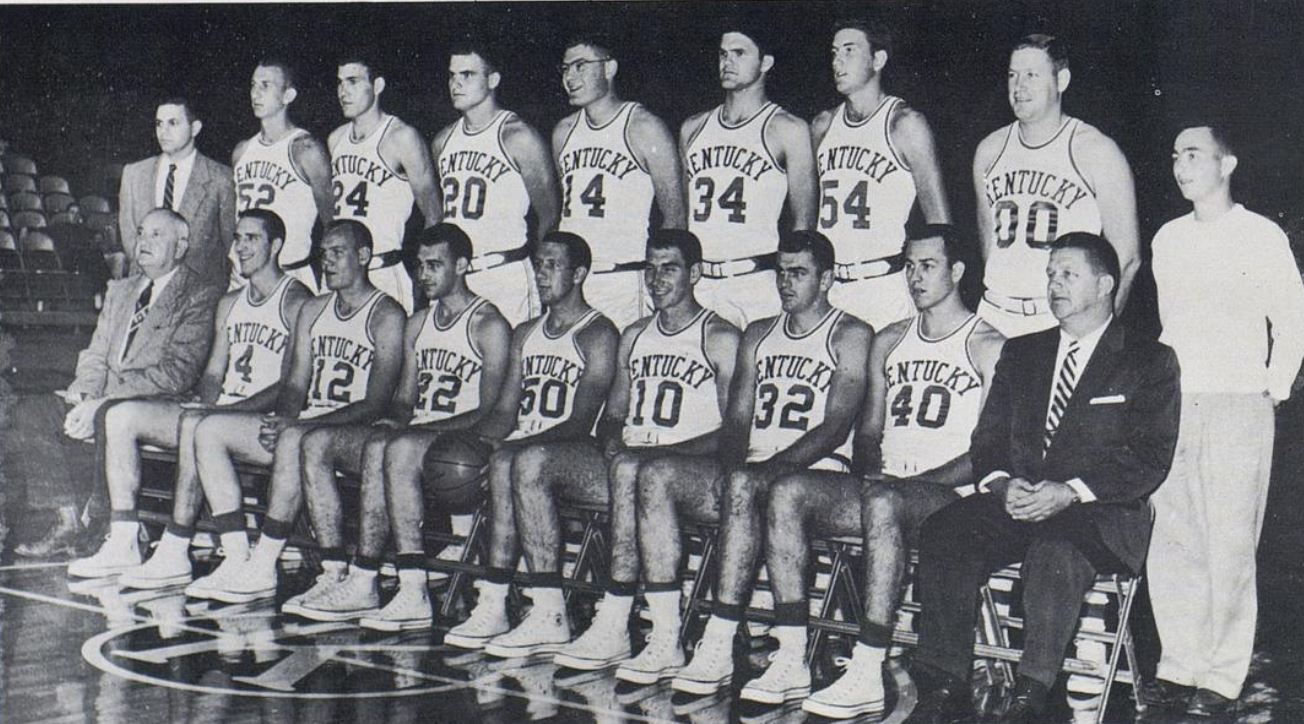🏀 Unmatched, Unshaken, Unstoppable: How Kentucky’s 129-Game Winning Streak from 1953 to 1955 Cemented the Wildcats’ 1950s Dynasty and Set a Gold Standard for Basketball Greatness
Lexington, Kentucky — In the rich and storied history of college basketball, few feats compare to the sheer dominance exhibited by the University of Kentucky Wildcats in the early 1950s. From 1953 to 1955, the Wildcats blazed through the hardwood with the ferocity of a blue-and-white hurricane, stacking an astonishing 129 consecutive victories—a streak that would etch itself into basketball folklore and serve as a symbol of unrelenting excellence.
The Streak That Shook the Sport
The 129-game winning streak wasn’t just a string of victories—it was a cultural moment. In an era long before social media and highlight reels, word of Kentucky’s dominance spread like wildfire across the nation through newspaper headlines and radio broadcasts. Fans packed gyms just for the chance to witness a team that didn’t just play basketball—they perfected it.
From packed crowds at Memorial Coliseum to stunned silence in opposing arenas, the Wildcats made history with every tip-off. Under the leadership of legendary coach Adolph Rupp, the team’s precise execution, ruthless defense, and methodical scoring transformed each game into a masterclass in basketball fundamentals.
A Dynasty Forged in Discipline
What made the streak so extraordinary wasn’t just the wins—it was how Kentucky won. Each game was marked by unselfish play, relentless hustle, and a commitment to excellence that bordered on obsession. Rupp, known as “The Baron of the Bluegrass,” demanded perfection, and his players delivered it night after night.
The team’s depth was another key weapon. Players like Cliff Hagan and Frank Ramsey, who would go on to become legends in both college and professional basketball, weren’t just stars—they were symbols of Kentucky’s ironclad culture. Whether it was a non-conference matchup or a high-stakes rivalry game, the Wildcats approached every contest with championship intensity.
A National Phenomenon
As the wins piled up, so did the attention. National publications began covering Kentucky’s games with front-page urgency. Commentators across the country marveled at the streak’s longevity and the consistency it required in an era filled with travel challenges, no shot clock, and a far more physical style of play.
Opponents circled Kentucky’s name on the calendar as the team to beat—but few even came close. Coaches designed entire strategies just to slow down Rupp’s machine, but the Wildcats remained unbreakable. They weren’t just dominating—they were demoralizing their opponents.
The End of the Streak — But Not the Legacy
Eventually, the streak would end. In sports, all records are eventually broken or halted, and Kentucky’s 129-game run was no exception. But even in defeat, the legend only grew stronger. The streak had transformed Kentucky from a successful program into a dynasty. It established a national brand that persists today and inspired future generations of Wildcats to uphold the standard.
More importantly, it set a precedent for what could be achieved when preparation, talent, coaching, and culture collide.
A Benchmark for Greatness
To this day, no team has come close to matching that level of sustained success. In a world where even the best teams stumble, Kentucky’s 129-game winning streak stands as a defiant reminder of what greatness looks like in its purest form. It wasn’t about a single season or a lucky run—it was about building something that could withstand pressure, time, and expectation.
When fans speak of Kentucky basketball, they speak of banners, legends, and national titles. But somewhere near the top of that list stands a number—129—that means more than just wins. It means dominance, legacy, and the pursuit of perfection.
Conclusion: A Legacy Beyond Numbers
The Wildcats of the 1950s didn’t just win games—they set a bar. They redefined what excellence meant in college basketball. Their 129-game winning streak isn’t just a historical achievement—it’s a living, breathing part of Kentucky’s DNA.
As each new season begins in Lexington, the echoes of that golden era still reverberate through Rupp Arena. And though the players and uniforms may change, the message remains the same: greatness isn’t given—it’s built.
And in the 1950s, Kentucky built a basketball legacy that still towers over the game today.
Would you like this article formatted for print, turned into a narrated podcast script, or shortened f
or social media highlights?





























